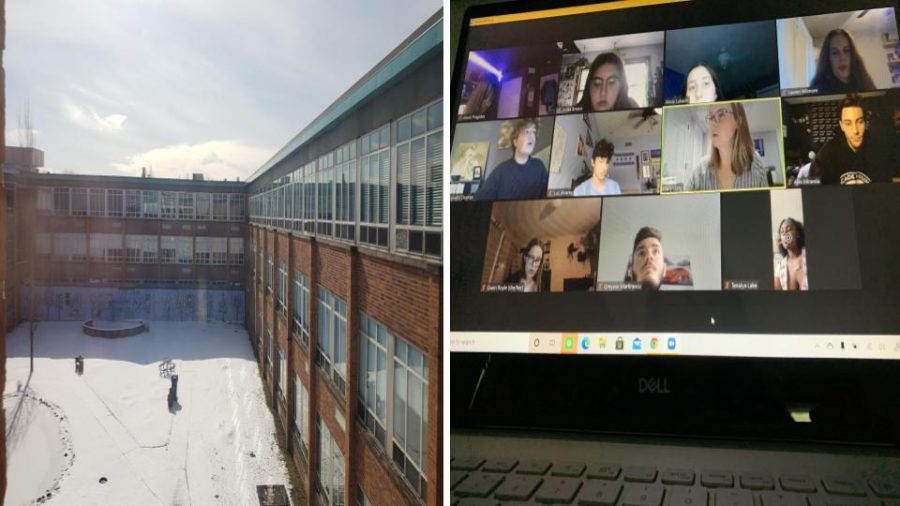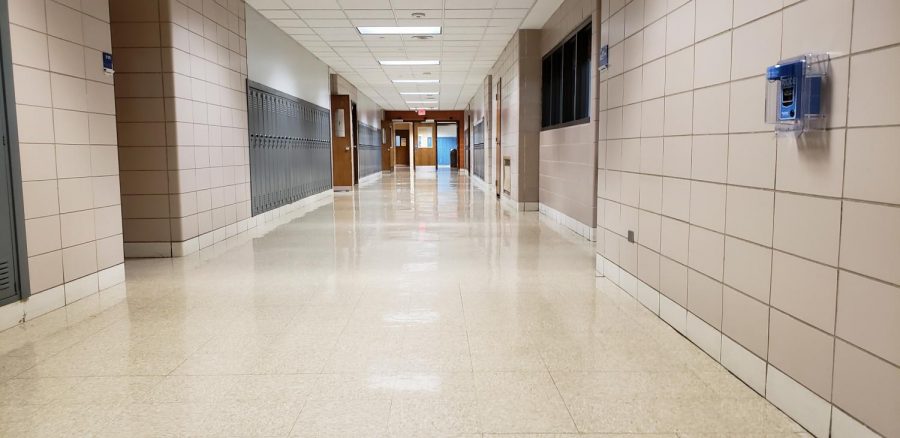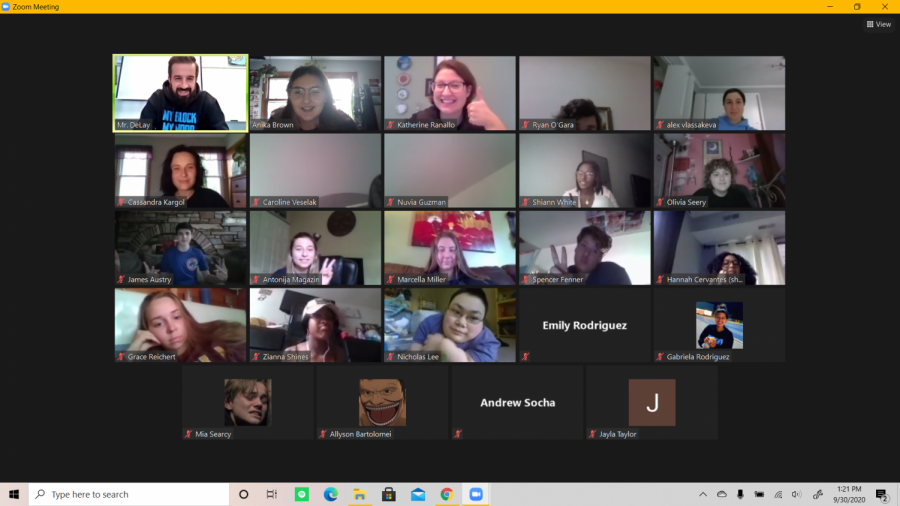Anika Brown and Greyson Martinescu
Side by side photo shares the difference between in person learning and a Zoom call.
Is hybrid learning a good option?
September 30, 2020
Hybrid learning provides the best pratical option
Starting October 19, students will have the chance to return for in person learning
Students should return to hybrid because it maximizes responsibility and safety.
When this pandemic hit back in March, closing in-person learning was the right decision at that time due to uncertainty about the severity of the virus. Given all the information that has been discovered about how to limit transmission indoors and the long-term effects of remote learning, returning to school on a limited schedule is the most sustainable option.
The sudden shift in how students across the country and world learn academically has all but hampered the mental and physical capabilities of how students perform overall in accomplishing school-related tasks. Not forgetting to mention the consistent internet issues that arise when the whole schools attempts to use Zoom at the same time
One study conducted by the University of Colorado Boulder shines a bright light on this occurring issue. Out of dozens of students surveyed, an overwhelming majority strongly agree or agree that Covid-19 has negatively impacted their learning environment, homework efforts and stress levels with consistently learning from home. While the same majority strongly disagree or disagree on the basis that they are performing better overall while being at home.
One other important aspect is the social interaction. Not being able to establish in-person connections ultimately contributes to lingering anxiety, nervousness and consistent worrying. Having students in a modified social setting and not behind the screen 24/7 is what drives them to engage and accomplish tasks far better.
The key for all this to work is finding a balance in returning as many students as possible but not letting the virus transmit out of control. It appears to be that a balance has been found in the newly modified hybrid schedule. Although it has been insisted that the school will be jammed pack based off the few images we saw off the internet of crowded school hallways, this will not be the case.
Classrooms will not become overcrowded as all groups are split in half by name and use of lockers and conjugating in the halls won’t be allowed. As masks have been constantly proven to reduce the risk of transmission in public settings, having face shields provides yet another layer of protection amongst the entire face.
Along with that, students needing to honestly answer a range of symptom related questions is crucial in providing a net of safety if someone who is potentially carrying the virus cannot enter the classroom. Each and every student/teacher plays a vital role in the safe return of in-person learning and it begins with maximizing safety protocols in the building. Most importantly, being honest about reporting symptoms and illnesses when asked.
The pandemic isn’t over: students should stay in remote learning
In early August, I came in contact with someone who tested positive for COVID-19 and was forced to quarantine for 2 weeks; it felt like complete torture. You might think that I’m just being dramatic, but imagine not being able to see your friends, your family, let alone go outside for 14 days.
As I look back at how much I hated my COVID-19 experience, I do realize how grateful I am that I tested negative. Fortunately, I had it easy, unlike the millions of families who didn’t have such a fortunate outcome. I wouldn’t want anyone to have to undergo that experience.
Going out by myself (with my mask, of course), I see a group of teenagers crowded around each other, completely ignoring the fact there is a global pandemic going on. As I see them, I just know if we would have gone back in person, almost every friend group would be just like this. Teenagers can’t help themselves; even a pandemic won’t stop them from seeing their friend.
As a teen, I know that many of my fellow classmates do not take this seriously. All over social media I see photos of girls and boys standing less than 6 feet away from each other, and it disgusts me. They express how much they want the pandemic to be over, but they need to understand that they need to wear a mask and social distance, to protect not just themselves but others.
Thinking of being in the building for school, I still get traumatic flashbacks of the overcrowded hallways, walking on top of each other having students sneezing and coughing in my face. As the school board presented a safe and more preventative step to open the school back up, I still can imagine that students will break the social distance rule.
Although hybrid learning would make us have a better opportunity to become successful in our learning, I maintain the idea that remote learning is the safer and more practical decision. Of course we all believe that being back in the classroom is the best case scenario for learning, but should we risk the health of us and our family members?
I’ve gotten numerous emails about how admin promised all these “safety precautions” if we would have gone back. My worst fear is coming home after being in a building with 1,500 other people and being the reason my parents get it, which would give me long-lasting guilt. The school board did give an alternative option for students to choose to go fully remote, which may be the better option for students like me.
Now, it’s not just the students who will be affected, but the teachers and staff as well. Many of the staff members are over 50 and some may have underlying conditions, which puts them into a high-risk group. If we were to be in person, just imagine how many students a teacher would come in contact with throughout the day.
Researchers at UCL, revealed that they believe a second wave of the virus may occur if students go back to school. Studies show that the second wave may increase the infection by two percent as the fall season begins. As the fall/winter season comes into full swing, many people are going to stay inside, which gives the virus an even greater chance of spreading.
To think that one person who was positive to be at school, an exponential rate of contact would cause a huge number of people who would have to quarantine and possible positive cases. I think that the risk far outweighs the benefits of hybrid learning as the reward of learning in a physical classroom isn’t as bad as the consequences could be.


